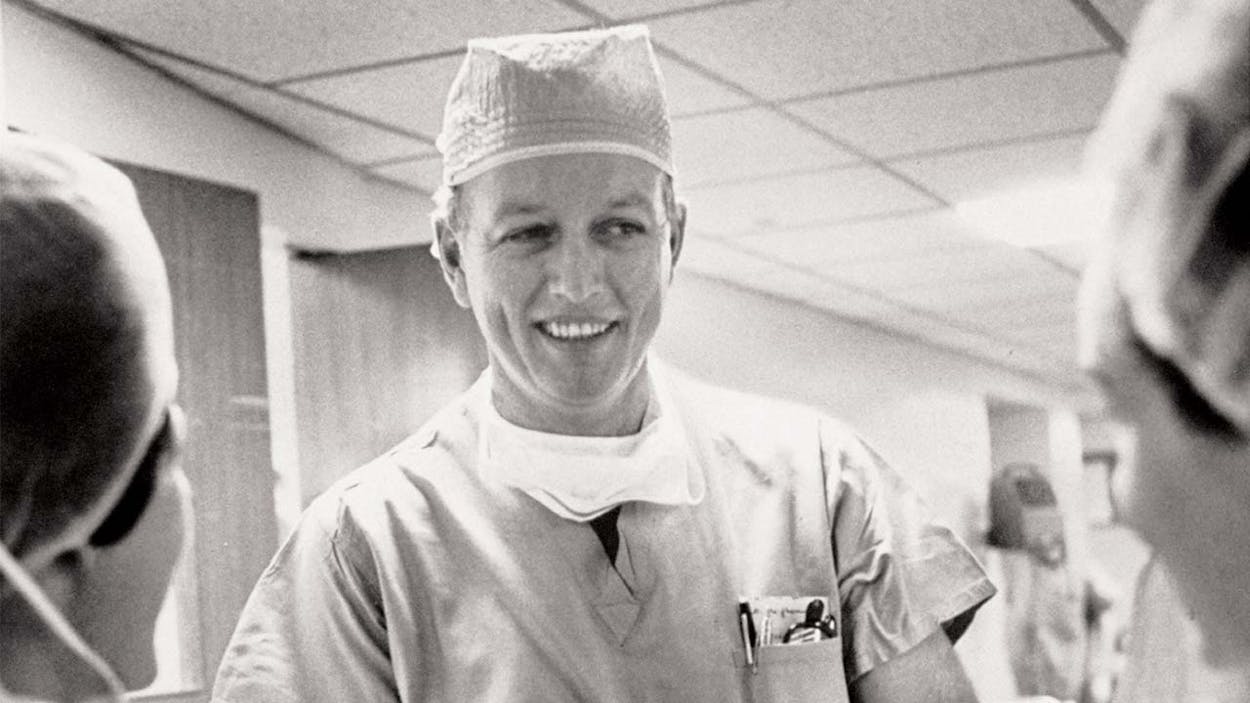During Denton Cooley’s funeral, in November, many of the people gathered at Trinity Episcopal Church were likely thinking how much better it would have been if he had been there. So many of his pals and admirers from Houston’s glory days were present—Lynn Wyatt, Joanne Herring, James Baker, and 41 himself, who was wheeled in after the service began and wheeled out shortly before it ended, with that classic, Bush-like over-the-top politesse that locals have come to know so well. An enormous arrangement of white roses and hydrangeas tamed in the shape of the Texas Heart Institute’s logo was an expansive, affectionate touch. But even as the sun came out on an initially gloomy day and streamed through Trinity’s stained-glass windows, any longtime Houstonian knew a chapter in the life of the city was drawing to a close. Houston these days is rich in diversity, but it’s far poorer in the kinds of characters who made the city what it once was: eccentric, entrepreneurial, and able to laugh at their own failures and foibles.
Michael DeBakey, John and Dominique de Menil, Joe Jamail, and many more have left the stage too. If you’re under a certain age or if you’re new to Houston, none of these names may mean anything to you, with the probable exception of the former president of the United States. But for decades those people were emblematic of a certain Houston way of being, of making sure that no opportunities—for fun or glory—were wasted and that a person could have a storied career but remain his or her own greatest creation. It’s the wildcatter myth writ large, and it’s hard to think of anyone who adhered to it better for 96 years than Denton A. Cooley.
It goes without saying that he was likely the greatest heart surgeon who ever lived. Born in Houston and baptized in the church in which he was memorialized, Cooley came of age with the dawn of heart surgery, which meant that he was saving lives before most surgeons could even begin to imagine cutting into our most vital organ. The lung machine, which now keeps cardiac patients alive with regularity, was something Cooley did without in his earliest years, and then he created a version of his own. He was faster in the operating room than anyone believed possible and took risks most physicians wouldn’t even think of taking. “We did some crazy shit,” one of his protégés told me, in an unguarded moment. This included doing the first successful heart transplant in the U.S. and the first implantation of an artificial heart, but also putting a sheep’s heart in a dying patient in hopes of buying time until a human donor could be found (it didn’t work). Cooley’s memoir, 100,000 Hearts, is a compendium of all his feats and could have been subtitled But Who’s Counting?
It didn’t hurt that Cooley was take-your-breath-away handsome, tall, aggressively fit, dimpled, his eyes ice-blue but capable of dancing to any tune called. All his life, Cooley had it going on, a fact that must have contributed to the myth that everything came easily to him, even though it didn’t. He was a tireless worker who devoted the vast majority of every day to patients at the Texas Heart Institute, which he had created. He was, in fact, at his office a few days before he died, just one month after he lost his wife of 67 years, Louise.
His work ethic may have been indisputable, but he also had time to flirt with European royalty and the secretaries in his office who were, to a one, lookers. It would have been hard to have been his son had he had one. As it was, Cooley lost one of his five daughters to suicide, though the surviving four certainly grew up surpassing whatever expectations you might have of the children of the rich and famous.
Cooley’s funeral had a lot of beautiful hymns, and the reverend gave a nice talk that related the four chambers of the heart to Cooley’s life. There was a recitation of his many accomplishments and assurances that Cooley loved his family most of all. It was a lovely ceremony, but what was most clear was that no one like Cooley would ever come this way again. His city had grown up, the institute he had founded was now affiliated with a Catholic chain, and surgery was no longer the province of those unburdened by silly things like medical malpractice laws. Most important, there was no one left to tell Cooley’s story better than he would have, and that was probably the way he would have wanted it.









